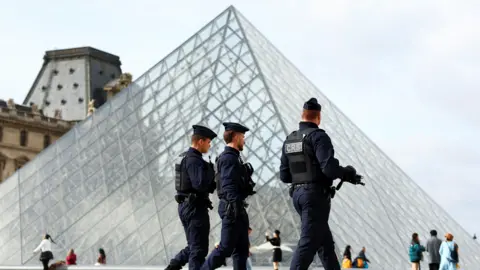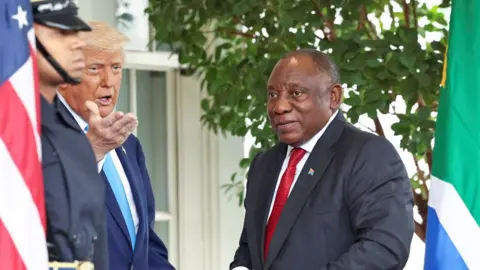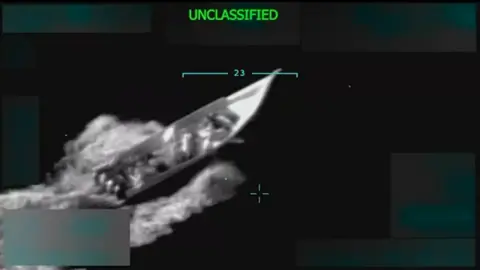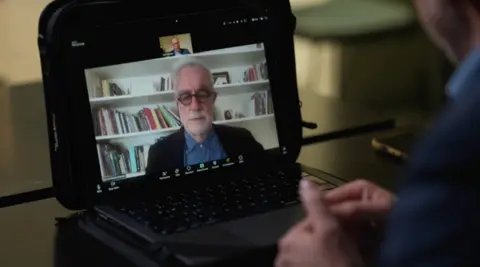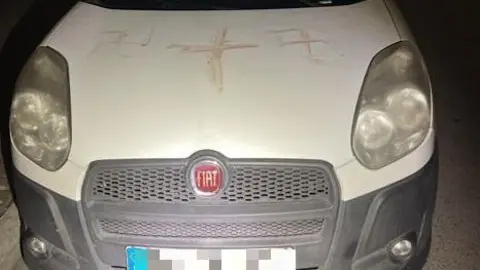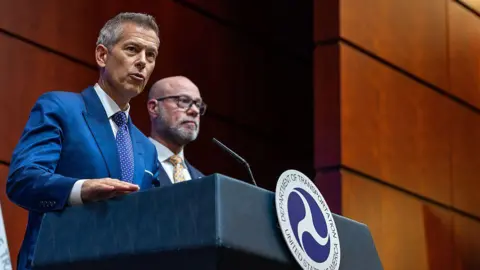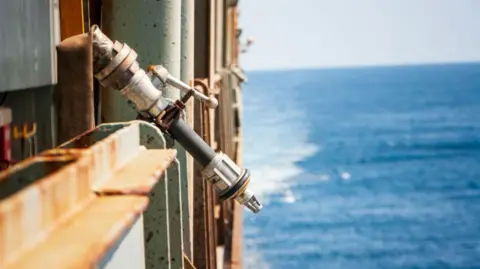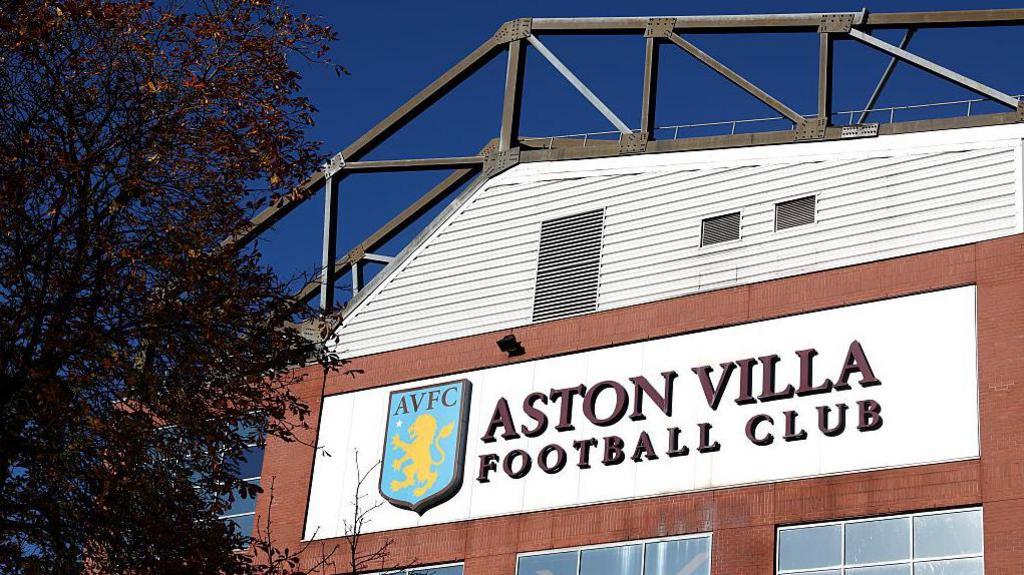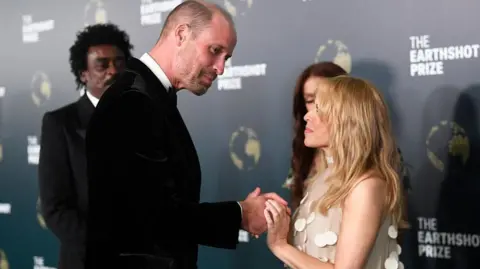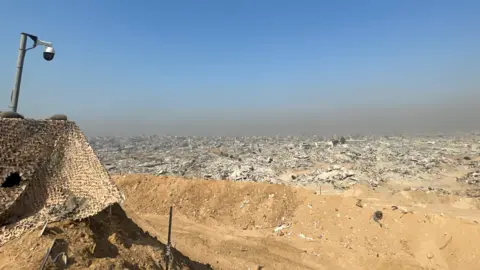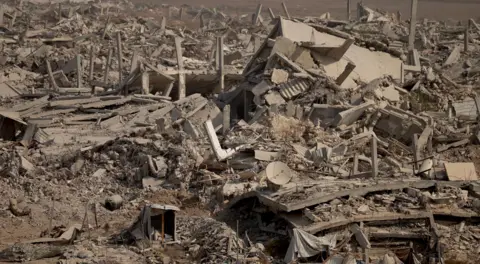Typhoon Kalmaegi hits Vietnam after killing at least 114 in Philippines

 Getty
GettyTyphoon Kalmaegi made landfall in Vietnam on Thursday after killing at least 114 people and flooding entire towns in the Philippines.
More than 260,000 soldiers are on standby for rescue efforts as winds of up to 92mph (149km/h) hit the country's coastline, according to Vietnamese media and the government's online portal.
Six airports in the country have been forced to close and hundreds of flights are expected to be affected, the government warned.
The country, which has already been battling record rains and floods, is now facing one of Asia's strongest typhoons this year.
The typhoon could generate waves of up to 8m (26ft) on the South China Sea, according to Vietnam's weather bureau.
The country's environment ministry said on Thursday that "the storm is on land, in the provinces of Dak Lak and Gia Lai" in a statement quoted by various outlets, including the AFP news agency.
The Vietnamese national weather forecaster says hundreds of localities in seven cities and provinces are at risk of flooding and landslides in the next six hours.
There have already been reports of damage from several provinces, including roofs torn off homes, shattered glass panels at hotels, and trees uprooted or snapped along city streets and rural roads by powerful gusts.
In the Quy Non area, trees have fallen on main roads and windows in hotels have smashed.
About 30 minutes after the typhoon made landfall, hundreds of residents in two communes of Dak Lak province called for help, local media reported.
Many people reported that their homes had collapsed or been flooded, while strong winds and heavy rain continued to batter the area.
Dak Lak province is approximately 350km (215 miles) north-east of Ho Chi Minh City.



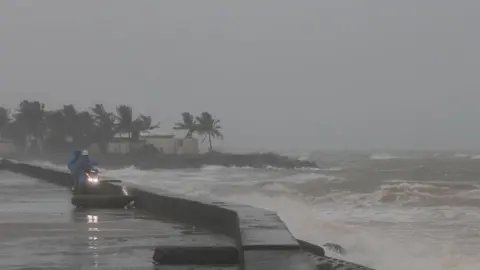 EPA
EPAVietnam's military has deployed more than 260,000 soldiers and personnel, along with more than 6,700 vehicles and pieces of equipment, including six aircraft, to help with storm relief efforts.
On Wednesday morning, a reporter from AFP news agency saw officials knocking on the doors of homes in coastal communities and warning people to evacuate.
According to local media reports, Prime Minister of Vietnam Pham Minh Chinh held an online meeting to direct the emergency response.
"We must reach isolated areas and ensure people have food, drinking water, and essential supplies," he was quoted as saying.
"No one should be left hungry or cold."
Before making landfall in Vietnam, the typhoon, known locally as Tino, left a trail of devastation in the Philippines.
At least 114 people were killed and tens of thousands were evacuated, particularly from central areas including the populous island and tourist hotspot of Cebu, where cars were swept through the streets.
Early on Thursday, Philippines President Ferdinand Marcos Jr declared a state of emergency, the threshold of which involves mass casualty, major damage to property, and disruption to means of livelihoods and the normal way of life for people in the affected areas.

 AFP via Getty Images
AFP via Getty Images
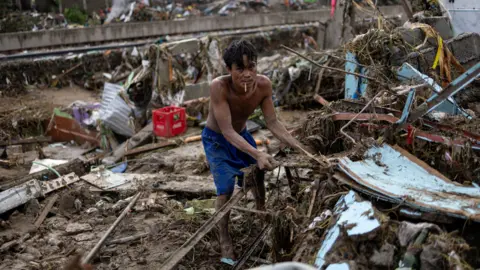 Reuters
ReutersVietnam has already been battling with floods and record rains for the past week.
Burst riverbanks have flooded some of the country's most popular tourist spots, including the Unesco-listed city of Hue and historic hotspot Hoi An, where residents have been pictured navigating the city in wooden boats after the Hoai river overflowed.
Seaside communities in Vietnam are expected to be hit hard by Typhoon Kalmaegi.
A sea-level rise of 4 to 6m (13 to 20ft) in at least two provinces could capsize boats and devastate fishing farms, according to a forecast issued at 16:00 local time (9:00 GMT) by a senior official at Vietnam's National Center for Hydro-Meteorological Forecasting.
Meanwhile, deputy director Nguyen Xuan Hien says Typhoon Damrey - which struck Vietnam in 2017 with less intensity than Kalmaegi, but still caused severe damage to coastal communities - should serve as a warning and urged people to remain highly alert.
Thailand is also bracing for the storm's impact. Local officials have warned of flash floods, landslides and river overflows.
